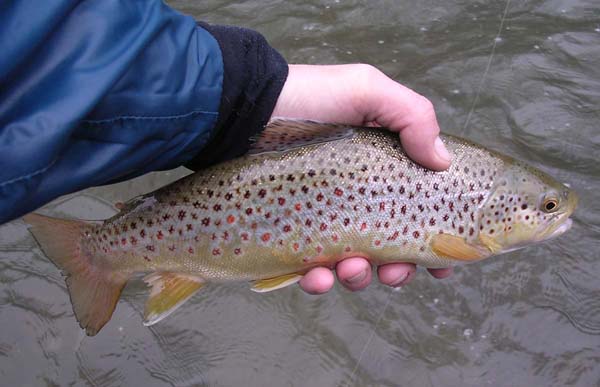M
Mike
Well-known member
- Joined
- Nov 10, 2006
- Messages
- 5,441
Embedded in the wild trout discussion was a comment (paraphrased) that stocked brown trout do not spawn successfully, with some reference to poor spawning site selection.
That is certainly not the case in Pa., and I will support that comment with just two observations. Long term studies by a power company on the East Branch Perkiomen Creek, a (very) warmwater stream, had never found wild trout or fingerling trout, nor had the PFBC. Following the first fall stockings of adult browns, fingerling browns were found in the same stretch at the historical sampling sites by the consultants. As expected in this warmwater stream, they did not survive the summer. The point is, however, the the stocked adults spawned successfully. Another case is that of the Class A Codorus Creek. The best available information is that the Codorus population's "founders" were spring stocked adult brown trout planted after the creation of the cold water producing Lake Marburg dam. Before construction of the dam, Codorus Creek was also a warmwater stream in the stretch that now supports the thriving trout population. I am unaware of any wild brown trout streams that were present in the upper Codorus or West Branch basins prior to the dam's construction.
That is certainly not the case in Pa., and I will support that comment with just two observations. Long term studies by a power company on the East Branch Perkiomen Creek, a (very) warmwater stream, had never found wild trout or fingerling trout, nor had the PFBC. Following the first fall stockings of adult browns, fingerling browns were found in the same stretch at the historical sampling sites by the consultants. As expected in this warmwater stream, they did not survive the summer. The point is, however, the the stocked adults spawned successfully. Another case is that of the Class A Codorus Creek. The best available information is that the Codorus population's "founders" were spring stocked adult brown trout planted after the creation of the cold water producing Lake Marburg dam. Before construction of the dam, Codorus Creek was also a warmwater stream in the stretch that now supports the thriving trout population. I am unaware of any wild brown trout streams that were present in the upper Codorus or West Branch basins prior to the dam's construction.




